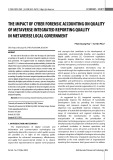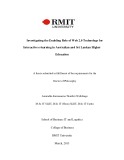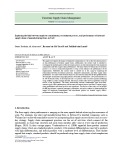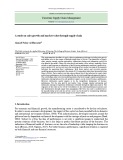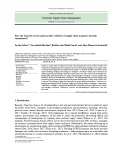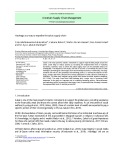
http://www.iaeme.com/IJMET/index.asp 26 editor@iaeme.com
International Journal of Mechanical Engineering and Technology (IJMET)
Volume 10, Issue 03, March 2019, pp. 26-40. Article ID: IJMET_10_03_004
Available online at http://www.iaeme.com/ijmet/issues.asp?JType=IJMET&VType=10&IType=3
ISSN Print: 0976-6340 and ISSN Online: 0976-6359
© IAEME Publication Scopus Indexed
FACTORS INFLUENCING HOUSING
DEVELOPMENT PATTERNS IN
INTERNATIONAL BORDER TOWNS IN
OGUNSTATE, NIGERIA
OJO Oladimeji Olusola, OPOKO Akunnaya Pearl
Department of Architecture, Covenant University, Ota Ogun State, Nigeria
OLOTUAH Abiodun Olukayode
Department of Architecture, Federal University of Technology, Akure Ondo State, Nigeria
OLUWATAYO Adedapo Adewunmi
Department of Architecture, Covenant University, Ota Ogun State, Nigeria
ABSTRACT
The estimation of determinants of housing development patterns in international
border towns is essential to overcome some of the challenges facing development in
these areas. However, few studies have detailed physical factors and neighbourhood
characteristics as determinants of housing formation in international settlements. It is
in this respect that the researcher aimed at evaluating these factors as regard housing
formation pattern in international areas. The study systematically obtained the opinion
of selected 361 residents in three selected towns between Nigeria and Benin-Republic
using questionnaire instrument. Also, the relationship between housing development
pattern and the determinants was hypothesized based life-cycle model of neighbourhood
change using Structural Equation Modelling (SEM). Both models of SEM –
Measurement model and Structural model – adequately fit the study data. From the
structural model findings, it was discovered that both physical (0.13) and
neighbourhood factors (0.11) significantly have direct effects on housing development
pattern in international towns. Housing physical factors such as road network, land
features, dwelling accessibility and vegetation have indirect effect on housing pattern
just like neighbourhood factors in the area of drainage system, level of infrastructural
facilities, condition of space, and condition of foundation and land acquisition finance.
The study affirms that both physical factors and neighbourhood factors largely and
significantly influence housing formation patterns in the international borders.
Therefore, there is need for Nigeria government most specially to take cognizance of
these important factors when formulating or developing her housing development plan.





